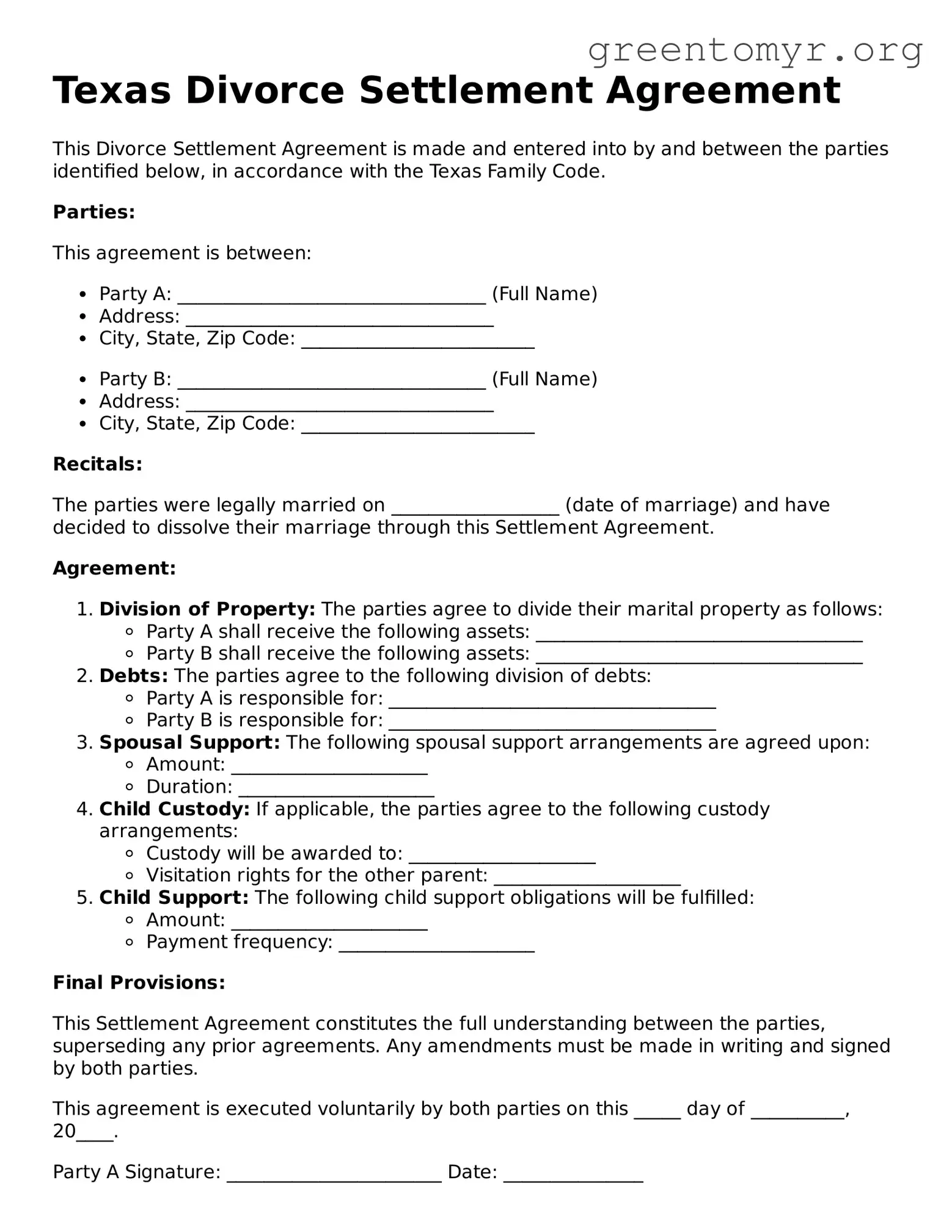What is a Texas Divorce Settlement Agreement?
A Texas Divorce Settlement Agreement is a legal document that outlines the terms agreed upon by both spouses regarding the division of assets, debts, custody arrangements, and other important issues related to the divorce. This agreement is vital because it helps to ensure that both parties are clear about their responsibilities and rights, reducing the likelihood of future disputes. Once finalized and approved by a court, the agreement becomes enforceable, meaning both parties are legally obligated to adhere to its terms.
How do I create a Divorce Settlement Agreement in Texas?
Creating a Divorce Settlement Agreement involves several steps:
-
Open a dialogue with your spouse to discuss expectations and needs.
-
Identify and list all marital assets and debts, including real estate, vehicles, bank accounts, and credit obligations.
-
Negotiate terms concerning spousal support, child custody, and visitation rights if applicable.
-
Draft the agreement, ensuring that it captures all discussed terms clearly and accurately.
-
Consider consulting a legal professional to review the document before both parties sign it.
Remember, the clarity and completeness of your agreement can help make the divorce process smoother for everyone involved.
How is custody determined in a Divorce Settlement Agreement?
Custody in a Divorce Settlement Agreement is determined based on what is in the best interests of the child. Both parents can work together to outline custody arrangements, which may include:
-
Physical custody, indicating where the child will live.
-
Legal custody, regarding the rights to make significant decisions affecting the child's life.
-
Visitation schedules to ensure that the child maintains a healthy relationship with both parents.
If parents cannot reach an agreement, a family court may intervene and determine custody based on numerous factors, such as the child's age, needs, and the parents' living conditions.
What happens if one spouse does not follow the agreement?
If one spouse fails to comply with the Texas Divorce Settlement Agreement, the other spouse has legal rights to seek enforcement. This may involve filing a motion with the court, which can lead to legal consequences for the non-compliant spouse. Remedies can include being ordered to fulfill the agreement, paying fines, or facing other penalties as determined by the court. It is essential to document any violations of the agreement and seek legal advice to understand the next steps.
Can a Divorce Settlement Agreement be modified after it is signed?
Yes, a Divorce Settlement Agreement can be modified after it is signed, but this usually requires mutual consent from both parties, or a demonstration of a significant change in circumstances. Common reasons for seeking modifications include changes in income, relocation, changes in the child’s needs, or any other factor that significantly impacts the agreement's terms. To formalize a modification, filing with the court is often necessary, especially if it involves child custody or support issues.
